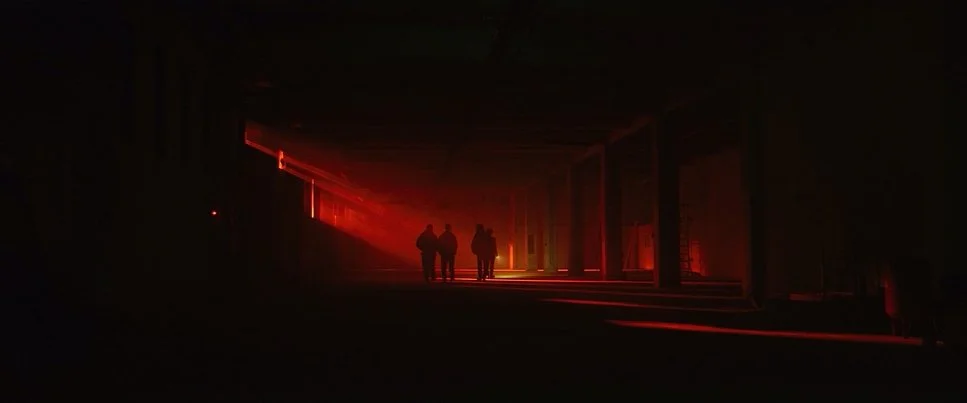Understanding Hard and Soft Light Sources
Oppenheimer (2023) by Christopher Nolan
Greetings, aspiring indie filmmakers! Welcome to an enlightening exploration of one of the fundamental aspects of cinematography—lighting. Specifically, we're going to dive deep into the world of hard and soft light sources. These two types of lighting play a pivotal role in shaping the mood, atmosphere, and visual storytelling of your films. In this comprehensive guide, we'll unravel the mysteries of hard and soft light, backed by examples from iconic films and insights from renowned cinematographers, editors, and directors. So, let's illuminate your path to mastering these essential lighting techniques.
The Basics of Hard and Soft Light
Hard and soft light sources differ primarily in the quality of light they produce. Hard light creates well-defined, sharp shadows, while soft light results in gentle, diffused shadows. Understanding this basic distinction is crucial for indie filmmakers aiming to achieve specific visual effects and emotional tones in their scenes.
Parasite (2019) by Bong Joon Ho
Creating Drama with Hard Light
Hard light sources, often characterized by their intensity and directness, are frequently used to create drama and contrast in scenes. Director Ridley Scott, in "Blade Runner," used hard light to illuminate the futuristic, dystopian world of the film, emphasizing the stark contrast between light and shadow. Indie filmmakers can employ hard light for visually striking, high-contrast compositions that evoke tension and suspense.
Blade Runner 2049 (2017) by Denis Villeneuve
Soft Light for Subtlety and Naturalism
Soft light sources, on the other hand, are ideal for achieving a softer, more natural look in your indie films. Cinematographer Emmanuel Lubezki, in "The Tree of Life," employed soft light to capture the film's ethereal and contemplative atmosphere, enhancing the emotional depth of the story. Soft light can help indie filmmakers convey intimacy, warmth, and a sense of realism in their scenes.
The Tree of Life (2011) by Emmanuel Lubezki
Modifiers and Diffusion Techniques
To manipulate hard and soft light, cinematographers often use modifiers and diffusion techniques. Renowned cinematographer Roger Deakins, in "The Assassination of Jesse James by the Coward Robert Ford," used diffusion filters to soften the hard light, creating a dreamlike quality in certain scenes. Indie filmmakers can experiment with modifiers like softboxes, bounce boards, and diffusion gels to control and shape their lighting.
The Assassination of Jesse James by the Coward Robert Ford (2007) by Andrew Dominik
Considerations for Genre and Mood
The choice between hard and soft light should align with the genre and mood of your indie film. For instance, horror films often leverage hard light to enhance tension and fear, while romantic dramas typically opt for soft, flattering light to convey intimacy and connection. Understanding how lighting impacts genre and mood is vital for crafting effective storytelling.
Manhunter (1986) by Michael Mann
Natural vs. Artificial Sources
Incorporating natural and artificial light sources can add depth and realism to your indie films. Director Terrence Malick, in "The Thin Red Line," seamlessly integrated natural sunlight with artificial lighting to capture the beauty and brutality of war. Experiment with combining these sources to achieve the desired visual impact while staying true to the narrative.
Time to Hunt (2020) by Yoon Sung-Hyun
The Art of Balancing Light
Achieving a balanced lighting setup is essential to ensure that hard and soft light sources work harmoniously within a scene. Collaborate closely with your gaffer and lighting team to strike the right balance, maintaining consistent exposure and contrast while preserving the emotional intent of your indie film.
Succession Season 2, Episode 4 (2019) by Robert Pulcini, Shari Springer Berman
The mastery of hard and soft light sources is a fundamental skill for any indie filmmaker. By understanding the characteristics of each type of lighting and drawing inspiration from iconic films and filmmakers, you'll be well-equipped to craft visuals that not only illuminate your scenes but also evoke the desired mood and emotion. So, harness the power of light, experiment with hard and soft sources, and let your creative vision shine brightly in the world of independent filmmaking. Happy filming!









